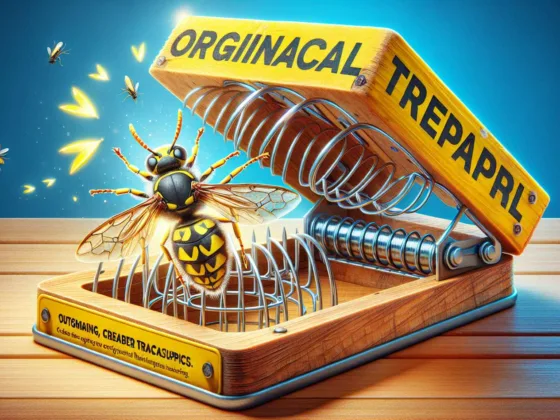Table of Contents Show
Introduction
Did you know that honey possums play a remarkable role in pollination, often overlooked yet crucial to ecosystem health? While bees are the undisputed champions of pollination, honey possums emerge as underrated heroes in this intricate process.
Typically, when we think about pollinators, bees come to mind almost instantly. They are well-known for their industrious nature and vital contributions to our gardens and agriculture. However, it is fascinating to discover that honey possums, small marsupials native to Australia, also contribute significantly to pollination.
In this article, we will delve into the unique characteristics, behavior, and conservation status of honey possums. Their specialized adaptations and foraging strategies not only make them efficient nectar feeders but also essential players in maintaining healthy ecosystems. As we explore these hidden heroes, you will gain a deeper appreciation for their indispensable role in supporting biodiversity through pollination.
Whether you’re a gardening enthusiast or simply curious about nature’s wonders, understanding the importance of these tiny creatures will inspire you to support local pollinator conservation initiatives. If you’re interested in creating an environment that supports various pollinators like honey possums, you may find valuable insights in articles on topics such as soil rehabilitation advice or cultivating hardy grape varieties suitable for northern gardens.
The Importance of Pollinators for Ecosystem Health
Pollinators play a crucial role in keeping ecosystems healthy. These animals, such as bees, butterflies, birds, bats, and even some small mammals like honey possums, help transfer pollen from one flower to another. This process is vital for plants to reproduce, produce fruits and seeds, and ensure the survival of plant species.
Why Pollinators Are Important
- Biodiversity: Pollinators contribute to biodiversity by assisting a wide range of plants in reproducing. Having diverse plant life creates homes for other living things and maintains a balanced ecosystem.
- Food Production: Many of the crops we rely on for food rely on pollination. Without pollinators, there would be a significant decrease in the availability of fruits, vegetables, nuts, and seeds.
- Ecosystem Benefits: Pollinators also provide other benefits to ecosystems besides food production. They help improve soil health and water quality through the plants they pollinate.
How Pollinators Help Biodiversity and Ecosystems
Pollination activities support biodiversity in several ways:
- Plant Reproduction: By helping plants reproduce sexually, pollinators ensure that there is enough genetic variation within plant populations.
- Creation of Habitats: Plants serve as sources of food and homes for various animals. When pollinated plants grow into trees and shrubs, they create habitats for birds, insects, and other creatures.
- Nutrient Recycling: Plants play a role in recycling nutrients in ecosystems. When pollinators assist with plant reproduction, they indirectly support processes like decomposition and enrichment of the soil.
The decline of pollinators not only endangers specific plant species but also poses a threat to entire ecosystems. For instance, certain native Australian plants rely on honey possums for pollination. When these small marsupials thrive, they help maintain the delicate balance of nature necessary for a healthy environment.
For gardening enthusiasts or those involved in crop production, understanding the significance of pollinators can lead to more successful gardens. Resources like our guide on protecting blueberry crops can be helpful in ensuring the health and abundance of your garden. This comprehensive guide covers common blueberry pests and diseases such as blueberry maggot, mummy berry, blueberry stem blight, spotted wing drosophila, and powdery mildew, and offers effective strategies for protecting your crop.
Realizing the wider impact of pollinators highlights why it is crucial to protect them. From supporting biodiversity to ensuring an adequate food supply and providing essential ecosystem services, these often overlooked heroes deserve our attention and conservation efforts.
Moreover, if you’re interested in cultivating a vegetable garden that truly embodies the meaning of fresh produce, understanding how pollinators contribute to a successful harvest is key.
Honey Possums: A Surprising Player in Pollination Dynamics
Bees often receive the spotlight as nature’s primary pollinators, yet the natural world is teeming with other unique pollinators. Bats, birds, butterflies, and even certain species of beetles contribute significantly to the pollination process. Each of these creatures plays a unique role in maintaining biodiversity and ensuring the survival of various plant species.
Among these lesser-known pollinators are honey possums. These fascinating marsupials, native to southwestern Australia, serve as specialized nectar feeders with significant roles in pollination dynamics. Unlike bees, which are generalist pollinators visiting a wide range of flowers, honey possums exhibit highly specialized behavior.
Characteristics that Set Honey Possums Apart
- Specialized Diet: Honey possums feed exclusively on nectar and pollen from specific flowering plants like banksias and eucalypts.
- Adaptations for Nectar Feeding: Their long, brush-tipped tongues allow them to access nectar deep within flowers that many other animals cannot reach.
- Efficient Pollen Transport: Their fur is uniquely adapted to pick up pollen grains as they move from flower to flower.
These adaptations make honey possums efficient at transferring pollen between flowers of the same species, thereby facilitating successful fertilization and seed production. This targeted approach can be contrasted with the broader feeding patterns of bees.
Foraging Behavior
Honey possums are active foragers, often moving quickly between flowers during their feeding sessions. This behavior increases their effectiveness as pollinators:
- Pollen Dispersal: By frequently visiting multiple flowers within a short period, they enhance pollen dispersal.
- Flower Fidelity: Their preference for specific types of flowers ensures that pollen is transferred within compatible plant species.
This kind of specialized foraging behavior is crucial for the reproductive success of certain plants.
In addition to these unique pollinators, there are other ways to boost pollination in various ecosystems. For instance, urban beekeeping has gained popularity as a means of enhancing pollination in cities, thereby boosting the health and biodiversity of urban gardens. Similarly, understanding pruning techniques can be beneficial in maintaining shrubs that provide essential habitats for pollinators like honey possums.
The Special Adaptations of Honey Possums for Nectar Feeding and Pollen Transport
Honey possums, also known as Tarsipes rostratus, are remarkable creatures with unique characteristics that make them highly efficient pollinators. These tiny marsupials have evolved several specialized adaptations to thrive as nectar feeders and pollen transporters.
1. Specialized Mouthparts
One of the most fascinating adaptations of honey possums is their highly specialized mouthparts. Equipped with an elongated snout and a long, brush-tipped tongue, honey possums can easily access nectar deep within flowers. This adaptation allows them to feed on a variety of native Australian plants, particularly those requiring precise pollination.
2. Fur for Pollen Collection
Honey possums also possess dense fur, which plays a crucial role in pollen collection. As they forage for nectar, their fur traps pollen from the flowers they visit. This pollen collection mechanism facilitates cross-pollination and ensures the reproductive success of numerous plant species.
3. Lightweight and Agile Bodies
The lightweight and agile bodies of honey possums enable them to navigate through dense vegetation with ease. Their climbing abilities allow them to reach flowers located in hard-to-access areas, contributing significantly to their effectiveness as pollinators in their native habitats.
4. Enhanced Olfactory Senses
Another noteworthy adaptation is their enhanced olfactory sense. Honey possums have a keen sense of smell that helps them locate nectar sources even from a distance. This ability ensures they can efficiently find and exploit floral resources, making them indispensable players in pollination dynamics.
Exploring these unique characteristics reveals just how well-adapted honey possums are for their roles in nectar feeding and pollen transport. Their specialized mouthparts, dense fur, agility, and sharp senses collectively underscore their importance in maintaining the health and diversity of ecosystems.
Understanding these adaptations not only highlights the incredible versatility of nature but also underscores the intricate relationships between species that sustain our environment. In fact, these amazing adaptations could serve as inspiration for cultivating plants in challenging climates.
Foraging Behavior and Pollen Dispersal Efficiency of Honey Possums

Honey possums, scientifically known as Tarsipes rostratus, exhibit fascinating foraging behavior that not only makes them excellent pollinators but also offers insights into effective landscape planning.
Foraging Strategies
These small marsupials primarily feed at night and display a remarkable talent for locating nectar sources. By utilizing both their eyes and sense of smell, honey possums effectively find a diverse range of native plants. Their specialized diet mainly consists of nectar and pollen from flowering plants such as banksias, grevilleas, and eucalypts.
- Selective Feeding: Unlike other pollinators, honey possums are highly discerning in their choice of flowers. This selectiveness leads them to repeatedly visit the same flower species, significantly increasing the likelihood of successful pollen transfer.
- Extended Feeding Time: They spend prolonged periods at each flower, allowing ample opportunity to collect pollen on their fur. As they traverse from one flower to another, they facilitate effective pollen dispersion between different plants.
Pollination Effectiveness
The exceptional pollination efficiency of honey possums is closely linked to their foraging behavior. These marsupials play a crucial role in cross-pollination by visiting multiple flowers while feeding.
- Pollen Collection: Honey possums possess fur that is specially adapted to trap pollen grains. As they feed on nectar, their bodies inadvertently come into contact with the reproductive parts of the flowers, resulting in the pickup and deposition of pollen.
- Systematic Movement Patterns: Honey possums follow an organized movement pattern while navigating their environment, ensuring extensive pollen transfer across a wide area. This systematic movement fosters genetic diversity among plant populations by promoting cross-pollination between distant individuals.
These behaviors underscore the vital role honey possums play in maintaining healthy ecosystems. Recognizing their significance alongside more familiar pollinators like bees is crucial, especially when considering the pollination ecology of acacias and other flowering plants that rely on alternative pollinators for reproduction.
For individuals interested in creating habitats that support a diverse range of pollinators, understanding these foraging strategies can be immensely beneficial. Whether you’re designing a garden or reevaluating your landscaping decisions, considering the behaviors and requirements of different pollinators such as honey possums can result in stronger and more resilient ecosystems.
By planning landscapes that provide food and shelter for a variety of pollinators, we can help ensure the health and sustainability of our natural environment.
To learn more about effective landscape planning and avoid common mistakes, check out this insightful guide which offers valuable advice on avoiding egregious errors during landscape planning.
Furthermore, if you are interested in successfully growing blueberries in Zone 6, we have an expert guide that provides tips and tricks to help
The Importance of Honey Possums as Pollinators in Their Native Habitats
Honey possums are crucial in their native habitats, especially in the biodiverse regions of southwestern Australia. These small marsupials have special adaptations that help them thrive in ecosystems where flowering plants, particularly those from the Myrtaceae and Proteaceae families, are dominant.
Plants That Depend on Honey Possums
Several plant species have developed close relationships with honey possums and rely on them for effective pollination:
- Banksia Species: Banksias are known for their beautiful flower spikes and heavily rely on honey possums for pollination. The structure of Banksia flowers is perfectly suited to the feeding habits of honey possums, allowing these marsupials to transfer pollen efficiently as they feed on nectar.
- Eucalyptus Trees: Many Eucalyptus species, which are part of the Myrtaceae family, also benefit from honey possums’ pollination activities. These trees produce large amounts of nectar, attracting honey possums and ensuring successful pollen transfer.
- Melaleuca Plants: Commonly known as paperbarks or honey myrtles, Melaleuca species have nectar-rich flowers that attract honey possums. The relationship between these plants and their furry pollinators shows how both parties benefit from these interactions.
The Role of Honey Possums in the Environment
The mutually beneficial relationships between honey possums and these plant species highlight the importance of these marsupials in their ecosystems. As honey possums search for nectar:
- They help with cross-pollination. This activity leads to greater genetic diversity among plants, which is crucial for ecosystems to adapt to changes in their surroundings. Cross-pollination ensures that plants can develop new traits that help them survive environmental stresses such as climate change, diseases, and pests.
- They support the reproductive success of vital plant species. By transferring pollen from one flower to another, honey possums ensure that key plant species like Banksias, Eucalyptus trees, and Melaleuca plants can reproduce successfully. This is essential for maintaining healthy plant populations.
By ensuring that key plant species can reproduce successfully, honey possums contribute to the stability of their habitats. This creates a balanced environment where both plants and animals can thrive. A stable habitat provides:
- Nutritional resources: Diverse plant species produce a variety of fruits, seeds, and foliage, which serve as food sources for different animal species.
- Shelter and nesting sites: Healthy plant communities offer shelter and nesting sites for various creatures, promoting biodiversity.
- Ecosystem services: Plants play a vital role in processes such as water filtration, soil stabilization, and carbon sequestration, all of which are essential for ecosystem health.
In summary, the presence of honey possums facilitates a thriving ecosystem where multiple species coexist harmoniously. Their role is indispensable in maintaining the intricate web of life within their habitats.
The Connection to Conservation
Studying these relationships helps us understand just how vital honey possums are in maintaining healthy ecosystems. When we protect these marsupials, we are also indirectly conserving the native plant communities that rely on them.
For individuals interested in supporting local pollinators like honey possums by incorporating suitable plants into their gardens, consider exploring New Plant Varieties: Breeding Plants to Be Hardier and Healthier for ideas on selecting resilient plant varieties. This blog post offers insights into breeding practices that result in new varieties of plants that are hardier and healthier, making them more likely to thrive in various conditions.
By recognizing the specific roles that different creatures play in our ecosystems, we can develop more focused conservation initiatives and foster a deeper admiration for the unsung heroes of nature.
Conservation Challenges and Strategies for Protecting Honey Possum Populations
Challenges Faced by Honey Possums
Honey possums face several significant threats that jeopardize their survival:
1. Habitat Loss
With ongoing urbanization and agricultural expansion, natural habitats are shrinking. This loss disrupts the delicate ecosystems honey possums depend on, particularly the specific flowering plants they rely on for nectar.
2. Climate Change
Alterations in climate patterns impact flowering periods and nectar availability. Unpredictable weather can lead to mismatches between the blooming of plants and the active periods of honey possums, reducing their food sources.
3. Introduced Predators
Species such as cats and foxes pose serious threats to honey possum populations. These predators can drastically reduce numbers by preying on both adult possums and their young.
Strategies for Conservation
Efforts to protect honey possum populations are multifaceted:
1. Habitat Restoration
- Replanting native flora in degraded areas helps restore essential food resources.
- Creating protected reserves ensures safe habitats free from human interference.
2. Climate Adaptation Strategies
- Monitoring flowering times and adjusting conservation actions accordingly.
- Researching climate-resilient plant species that can provide consistent nectar sources.
3. Control of Introduced Predators
- Implementing predator control programs in key habitats reduces the predation pressure on honey possums.
- Community awareness campaigns encourage responsible pet ownership to minimize the impact of domestic animals.
4. Research and Monitoring
- Continuous study of honey possum populations helps track changes and identify critical needs.
- Long-term monitoring programs ensure timely interventions when populations decline.
Supporting these conservation strategies not only aids honey possums but also strengthens entire ecosystems by maintaining the intricate web of pollination they help sustain. Adopting these measures is crucial for preserving nature’s hidden heroes in pollination dynamics.
Conclusion
Supporting local pollinator conservation initiatives is a powerful way to make a difference. Simple actions like creating bee-friendly gardens or contributing to organizations dedicated to protecting native pollinators like honey possums can significantly impact our ecosystems.
Maintaining a diverse community of pollinators ensures a sustainable future. Each species, including the often-overlooked honey possums, plays a crucial role in maintaining ecological balance. By valuing and preserving these hidden heroes of pollination, we contribute to the health and vitality of our natural world.
Honey possums, with their unique adaptations and behaviors, underscore the intricate web of life that sustains our planet. From bees to birds to these tiny marsupials, every pollinator adds to the richness and resilience of our environments. Supporting them means supporting life itself.
FAQs (Frequently Asked Questions)
Pollinators play a crucial role in keeping ecosystems healthy by facilitating the reproduction of flowering plants, which in turn supports the food web and provides habitat for other wildlife.
Pollinators contribute to biodiversity by assisting in the reproduction of a wide variety of plant species, which ultimately supports diverse ecosystems and helps maintain genetic diversity within plant populations.
Honey possums have specialized mouthparts for nectar feeding, dense fur for pollen collection, lightweight and agile bodies for efficient movement, and enhanced olfactory senses to locate floral resources.
Honey possums are active foragers that primarily feed at night, displaying a high level of pollen dispersal efficiency due to their specialized adaptations for nectar feeding and pollen transport.
Honey possums are crucial in their native habitats because they play a significant role in pollination, particularly for plant species that have developed close relationships with them, ultimately contributing to the overall health and stability of these ecosystems.
Honey possums face significant threats such as habitat loss, climate change, and introduced predators. Conservation efforts include habitat restoration, climate adaptation strategies, control of introduced predators, and continuous research and monitoring of honey possum populations.










